I wanted to take you on a brief tour of Slaný, a royal town founded around 1300, although the weather wasn’t conducive to wandering its streets and would be more about text than photos. My Slavic readers (perhaps @seckorama) might find the name familiar—it means “salty.” The original settlement was established near a spring of heavily mineralized water, almost as salty as seawater. This spring was used for salt production, a relatively rare resource in early middle-aged Bohemia, thus the town’s name.
Původně jsem vás chtěl vzít i kolem Slaného, ale tak nějak to neklaplo, počasí nějakým toulkám tak úplně nepřálo. Královské město bylo založeno kolem roku 1300. Jeho jméno není žádná náhodná zkomolenina, býval tu pramen slaný skoro jako mořská voda, ze kterého se vyvařovala sůl. Dneska už ale slaný není, najdete ho kousek pod náměstím, a když přijdete v létě, můžete ho i ochutnat a přesvědčit se na vlastní chuťové buňky.
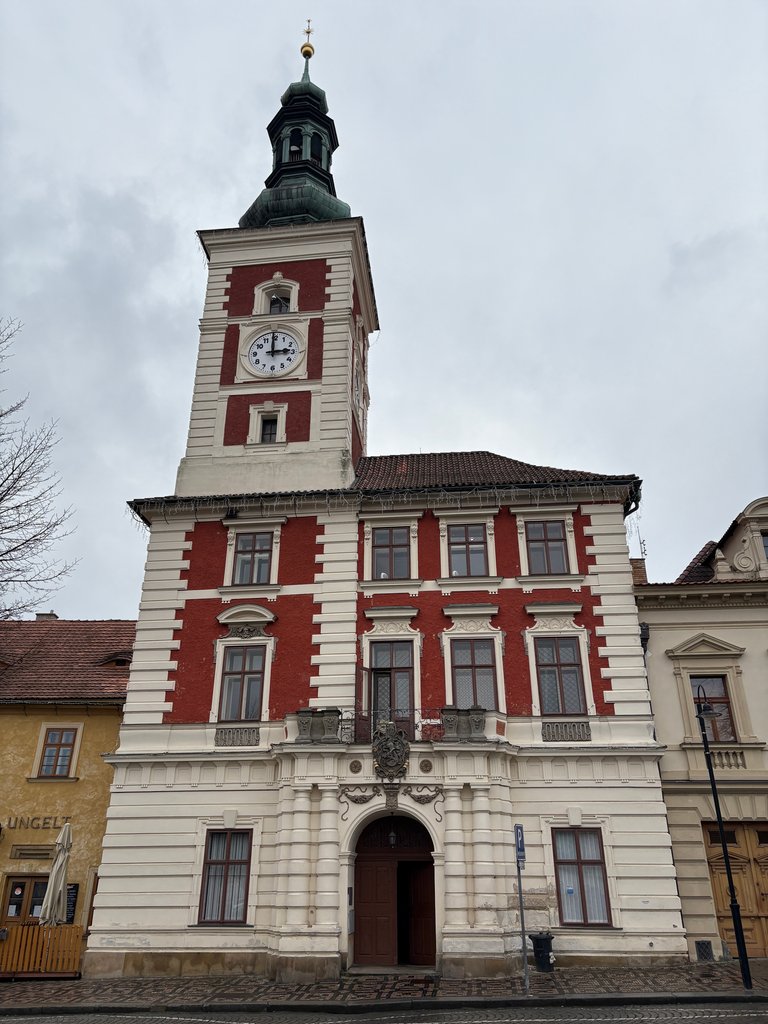
Slaný townhall

Velvary Gate
Although Slaný lies on the border of the famous Saaz hops region, in the 14th and 15th centuries, the surrounding fertile lands produced wine instead. Still, beer has been our liquid bread for over a millennium, and no royal town could maintain its prestige without a brewery—a privilege granted only to those with the valued brewing right. Slaný has had its brewery since 1518 in the very building I will take you for my #beersaturday pints. However, the building now has a slightly younger appearance, having acquired its current look after a reconstruction by Václav Antoš, the mayor of Slaný and a proud brewmaster, in 1578. With its rich decorations—for an ordinary townhouse with a brewery—the building is now protected, as is the town center.
Slaný sice leží na hranici žateckého chmelového regionu, ale za dob Karla IV. tu na příkaz panovníka vysadili víno. Jenomže naším tekutým chlebem je pivo, mít pivovar a právo várečné byla otázka prestiže a cti, a tak jeden založili i ve Slaném. Nejpozději v roce 1518 se pivo vařilo v budově, do které vás zavedu. Její stávající podobu má na svědomí zejména purkmistr a pivovarník Václav Antoš a jeho rekonstrukce v roce 1578. Budova, stejně jako centrum Slaného, jsou historicky chráněné.

The 16th century building
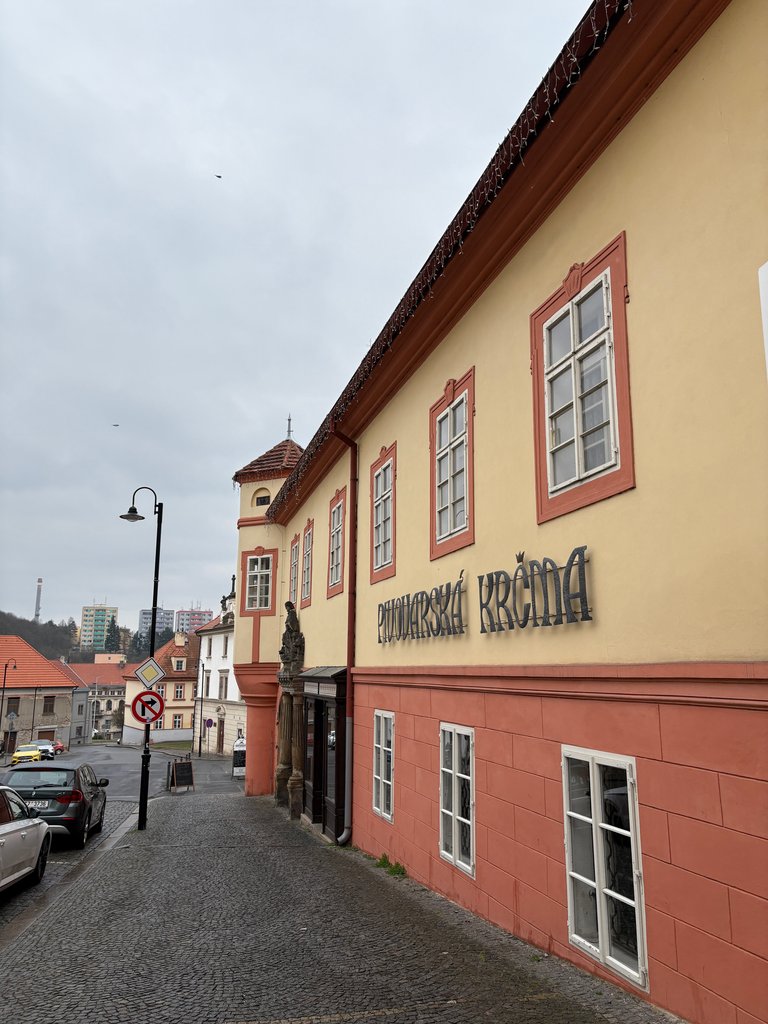
Pivovarská krčma - Brewery Tavern
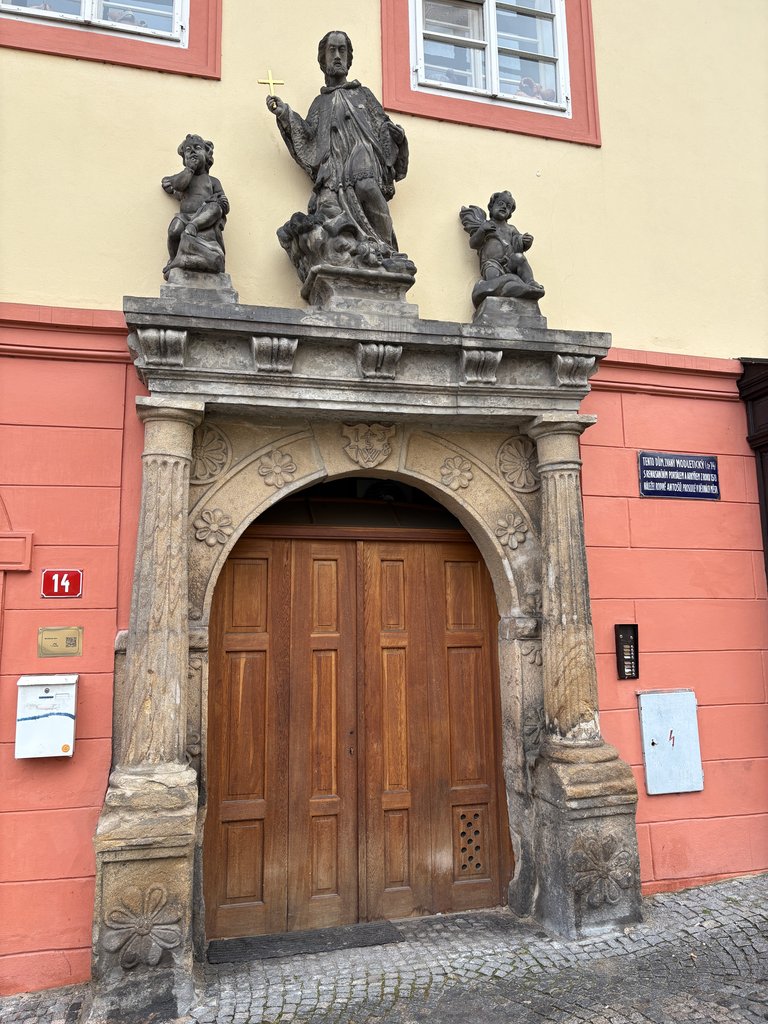
The old entrance
If you follow my #beersaturday posts regularly, you likely know the fate that many small breweries have met over the 20th century. They suffered during the world wars and the Great Depression of the 1930s, only to be shut down soon after the communist coup when no private enterprises were tolerated. Breweries were merged into large beer factories, and their buildings were repurposed. Many became warehouses or similar facilities and were neglected for decades until they almost collapsed. Hundreds have been revived since the Velvet Revolution. This building was used as a tenement and its condition wasn’t dire, which helped revive the tradition. The new brewery—honoring Mr. Antoš—opened in 2010 following the reconstruction of its original 16th-century building.
Osud českých a moravských pivovarů jistě znáte. Většině se podařilo s odřenýma ušima přežít obě světové války i hubená třicátá léta, aby je krátce po té druhé zavřeli komunisti. Malé pivovary sloučili do velkých průmyslových (že by se tady vzal ten rozšířený názor, že jídlo musí pocházet z fabrik a ne od malých zemědělců?), z jejich budov udělali skladiště, kasárna, nebo třeba zemědělská družstva, a pak je vesměs čtyři dekády zanedbávali. Další dekádu nebo budovy obvykle chátraly, než se je podařilo zachránit. Ať už jako znovuobnovené pivovary, nebo jako cokoli jiného užitečného. Tahle budova naštěstí sloužila k bydlení, a tak nebyla v tak tragickém stavu. Přesto musela nejprve proběhnout rozsáhlá rekonstrukce, než mohl být pivovar v roce 2010 znovu otevřen. A z úcty k tradici pivovarnictví ve Slaném nese jméno páně Antoše.
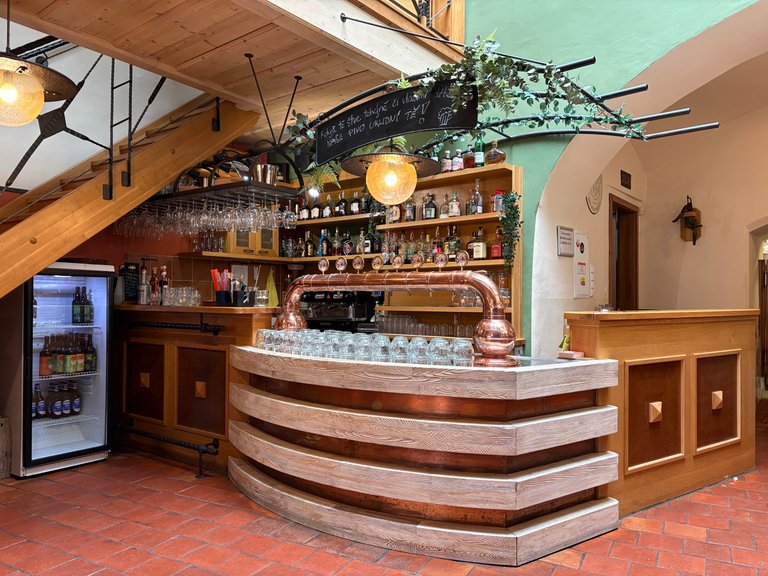
Like most countryside microbreweries, Antoš is likely one of the best places to dine even if you are not into beer—the classy interior is worth the visit. It was a rainy Sunday afternoon, so the venue wasn't busy. Like other breweries, Antoš relies on weekend visitors such as bikers and hikers, who skip rainy days. You can enjoy the first-floor terrace or the cellar taproom when the weather favors outdoor activities.
Antoš je, stejně jako asi většina malých pivovarů, jedno z nejlepších míst široko daleko, pokud jde o gastronomii. Ono deštivé nedělní odpoledne tu bylo celkem mrtvo, bez tradičních víkendových návštěvníků podobných zařízení. Ale když je hezky a do Slaného zamíří davy cyklistů, turistů, nebo třeba lezců z nedaleké via ferraty, otevírá se i posezení v patře nebo pivní sklepy, které byly zavřené.
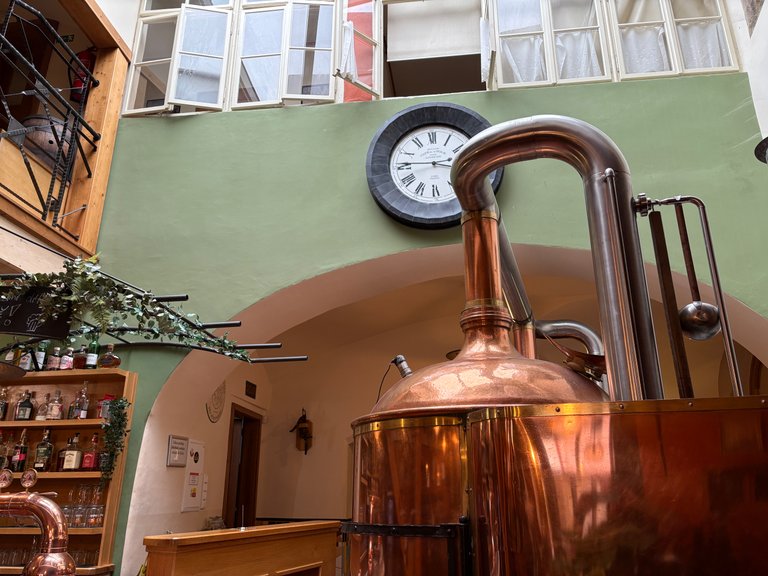
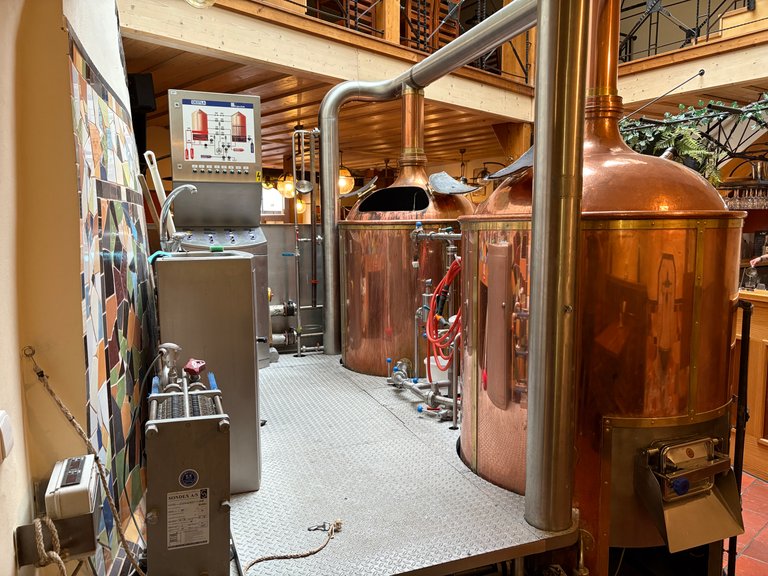
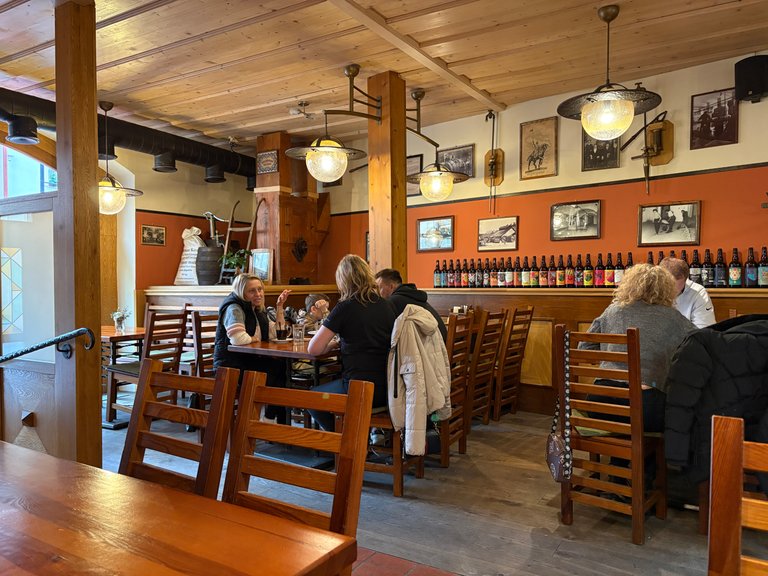
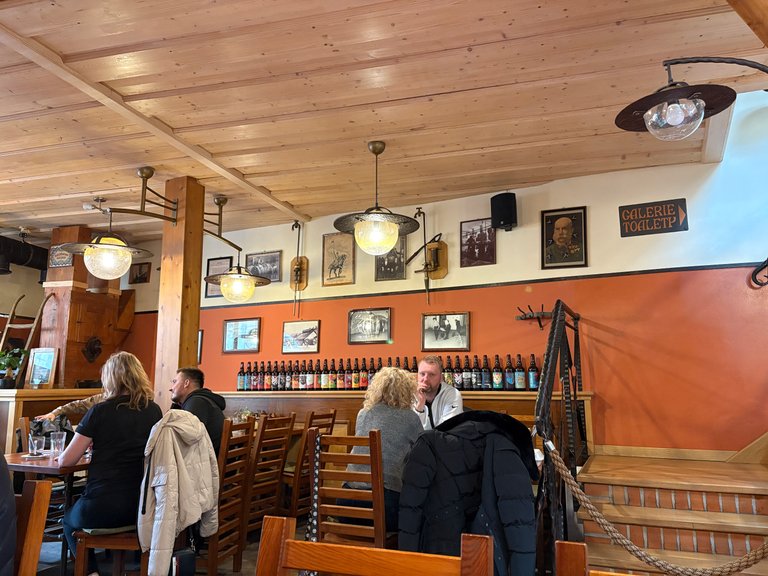
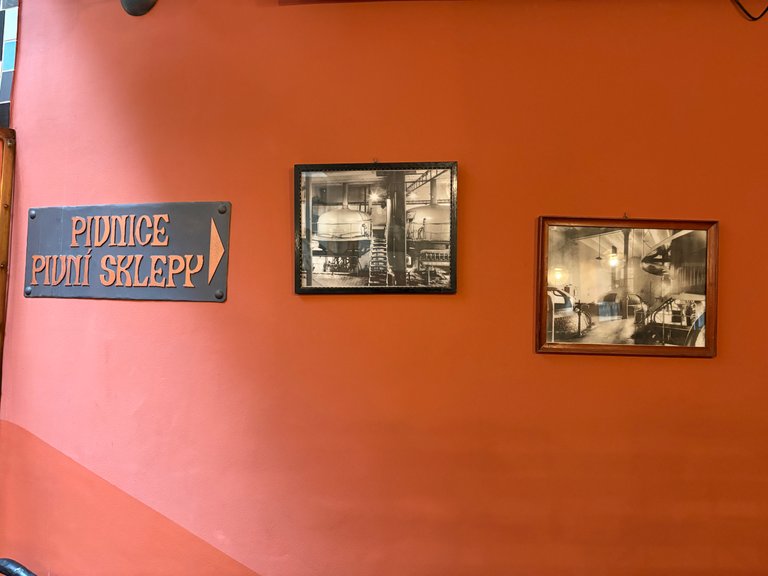
Beer
Antošův ležák, Bohemian Pilsner
Antoš' lager nods to centuries-long tradition—it isn’t as bitter as modern craft lagers. There’s a subtle malt breadiness in the aroma, complemented by herbal bitterness in the scent and the body. Some uncommon citric notes emerge in the aftertaste. I asked the bartender, and he mentioned it was brewed with an experimental Saaz hop variety. Overall, I like this brew, even though I generally lean towards more bitter lagers.
Minule jsem @tazi’ho pobavil tím, že ležák v Cobolis byl přesně takový, jaký by si asi přáli vařit v Plzni. Antošův ležák od toho není až tak daleko, taky není tak silně hořký jako jiné řemeslné ležáky. V vůni se jemně snoubí sladová chlebovost s bylinnou hořkostí, a v těle také. V dozvuku se objevuje trochu citrusových tónů - ptal jsem se obsluhy, a prý se vaří i z experimentálních chmelů. To by snad Plzeňákům vadilo, ale jinak je to skvělé pivo.
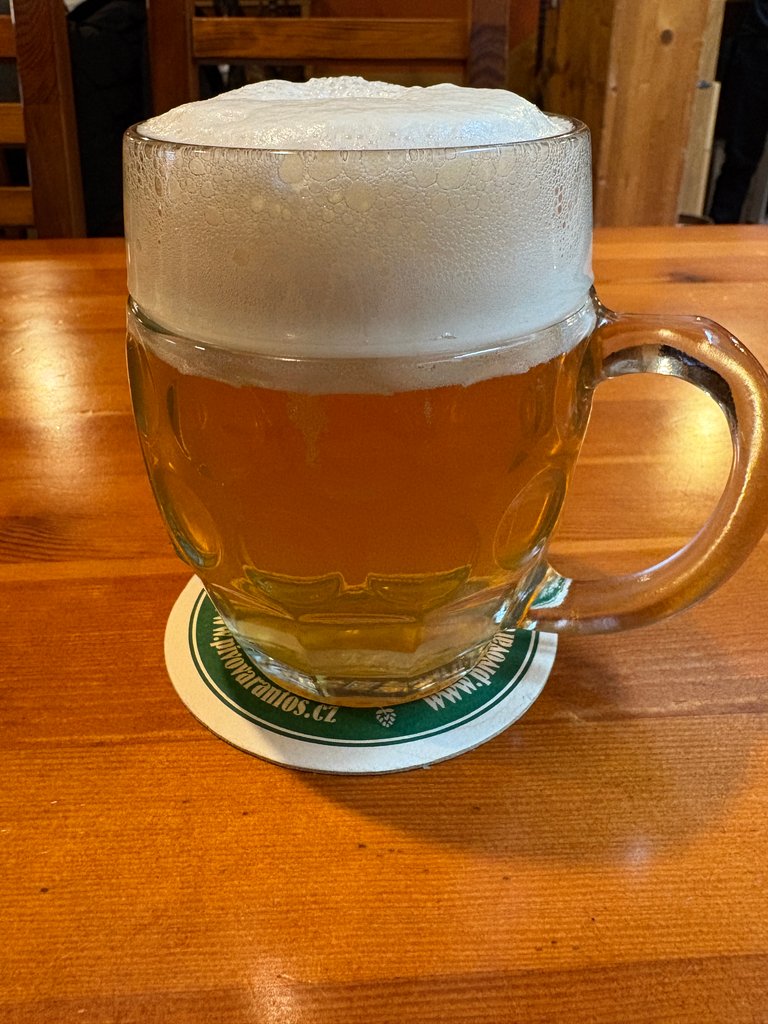
Polotmavá 13°, Bohemian style Vienna lager
Quite contrary to the usual style standards, this lager is quite bitter. Its floral, earthy bitterness—emerging from the caramel and malty body—comes through strongly, especially in the middle of the sip. The finish is distinctly malty, very much in line with Vienna lagers. For me, it was the weakest beer of the tasting.
U polotmavých piv naopak hořkost příliš výrazná nebývá, a tady květově-zemitá hořkost z karamelových tónů vystupovala docela výrazně, zejména zhruba uprostřed doušku. Závěr je sladový, hodně blízko vídeňským ležákům. Za mě nejslabší pivo téhle ochutnávky.
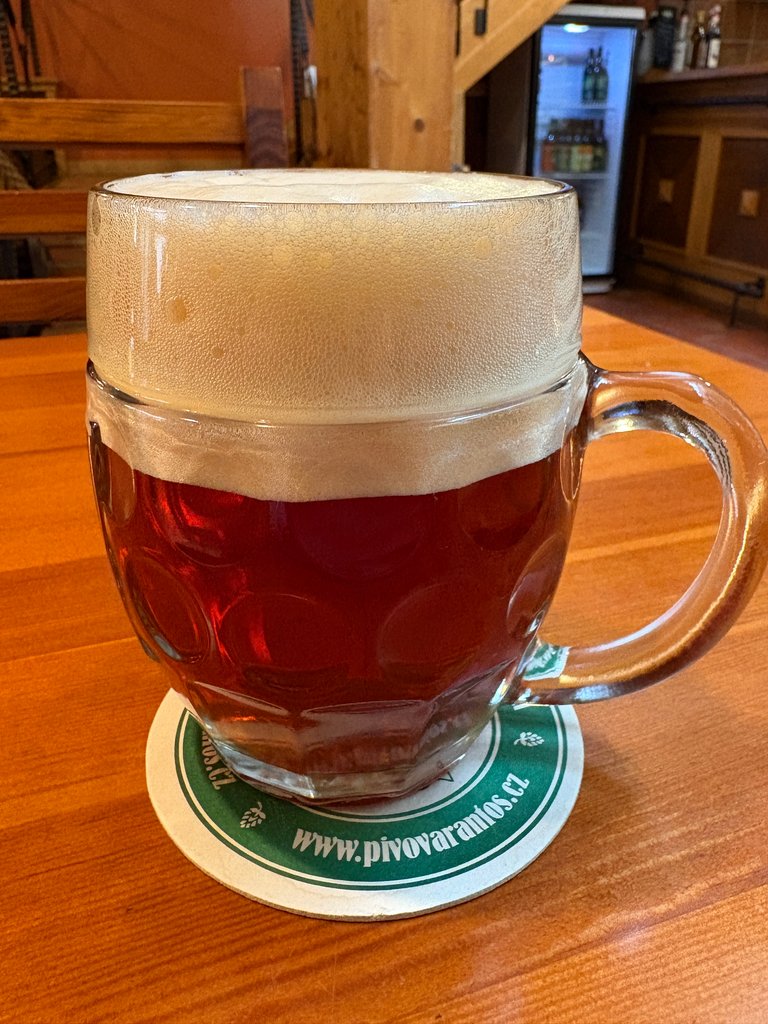
Rarach 10°, Bohemian Pilsner
Rarach is the most traditional beer of the tasting. All experiments aside, this is a full-bodied lager with medium bitterness and all the typical herbal notes of Saaz hops we Czechs love. The hop flavors blend seamlessly with the malty sweetness and a hint of yeast, evoking the character of a brew that might have been crafted in the same place a hundred and fifty years ago.
Rarach je trochu nečekaně nejtradičnějším pivem z ochutnávky. Žádné experimenty, je to poctivý, plný ležák se střední hořkostí a všemi těmi typickými bylinnými tóny, které by se v něm měly objevit. Chmelové chutě hrají se sladem a kvasnicemi. Umím si představit, že podobný ležák tu pokračovatelé pana Antoše vařili před sto padesáti lety.
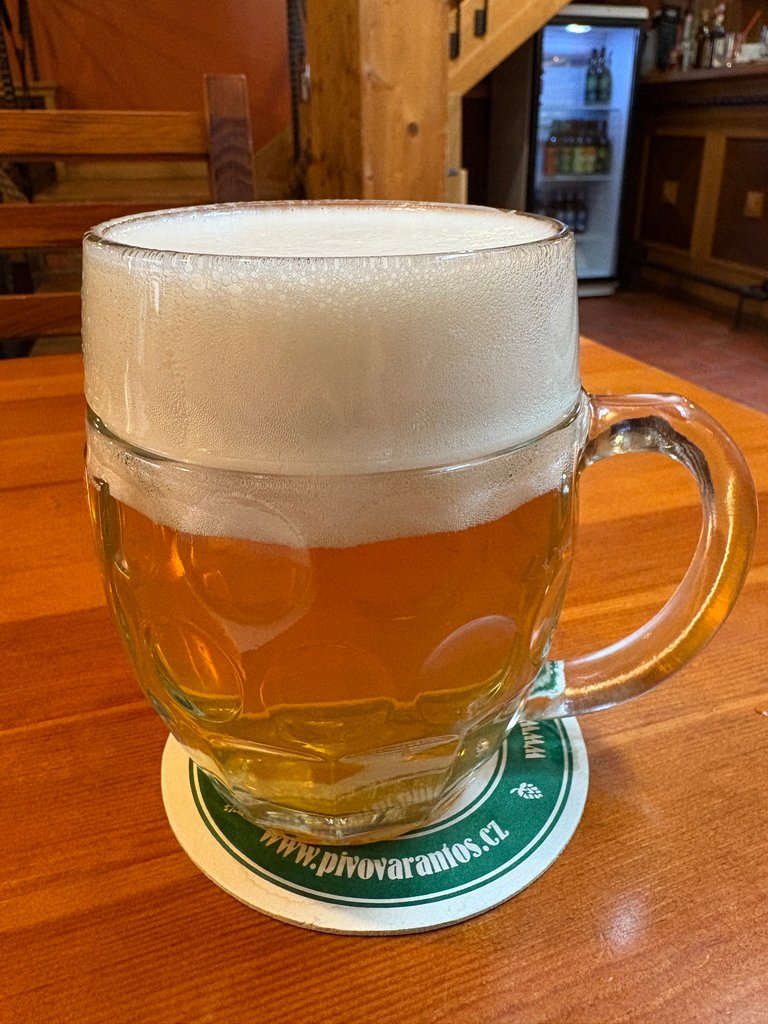
This is my #BeerSaturday challenge post, and I would like to invite @louis88 to participate. Write a post in any language about beer with at least 3 pictures. It does not have to be published on Saturday. Check the rules published by @detlev.
Cheers! That's right; we also say "Slano" for salty. The beers look good.
In Slovenia, we have one salt flat, sea salt flats, Sečovlje Salina Nature Park, which is a very interesting historical and cultural excursion if you ever find yourself here.
We also have a beer that is salted, industrial but not bad at all, with crystals of this salt, Laško Burin, it's only in Slovenian language, but you'll understand :)
I do :)
I like the colour of the middle one maybe it was the caramel and malty body, and interestingly you said that was the weakest!
The weakest of three great beers served at the very source ;) still a great one then ;)
Hehe it looked it :)
Pěkná reportáž 👍
Jinak onehdy jsem samozřejmě zaznamenal výzvu, na pivněsobotní post a myslím, že jsem pak zapomněl napsat komentář.
Rukavici snad zvednu. Nastává čas, který bude přát ochutnávkám. Jen teď už týden mám moribundus a nemám chuť ani na pivo ani na kávu... Ale to přijde 🤣
Když se ochutnávka spojí s výletem, taky mi pak to pivo koštuje víc :) Budu se těšit na tvůj článek, až se vyležíš :)
it is a nice place to stay and drink a few beers, i love that kind of bars :D
Which brewery isn't anyway? ;)
Přesto že pocházím ze Strážnice, což je kraj vína a kousek máme horňácko a to je slivovice, vždycky mne to táhlo k pivu. Jenže poslední tři, čtyři roky, jako by přešla chuť. A když není chuť, je to na houby. Nevím co se stalo, ale celkově jsem začal být spíš na různé ovocné birelly.
Asi stáří. Jiní přejdou na polosuchá, nebo dokonce sladká vína, mléko starců :)
Já ti dám starce😜
Que lugar espectacular. El olor a cerveza debe inundar los sentidos. Polotmavà tiene un color llamativo, debe ser exquisita. Gracias por mostrarnos este sitio. Y éxitos.😘🙏👏👏👏🇨🇺
I'm glad you liked the post :)
You are welcome.😘
You received an upvote ecency
Thanks!
You can check out this post and your own profile on the map. Be part of the Worldmappin Community and join our Discord Channel to get in touch with other travelers, ask questions or just be updated on our latest features.
Wooow
All I see here is intentionality and a lagacy that has stood the rate of time.
Am not a beer person else I’d be dying to have a taste of that goodness😂
!BEER 🍻